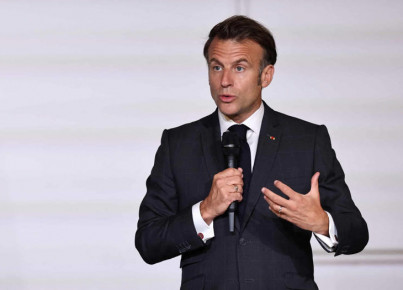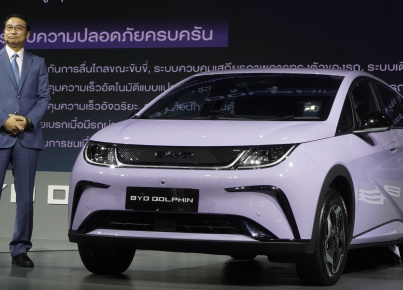Comparative analysis of two of Southeast Asia's energy giants
By Luca Menghini
Petronas, Malaysia's state-owned oil company, and Pertamina, its Indonesian counterpart, represent two of the most significant players in Southeast Asia's energy sector. These companies have been instrumental in driving economic growth and managing their countries' energy resources. Despite their shared role as national energy champions, their strategies, operational priorities, and approaches to the global energy transition differ significantly, shaped by distinct domestic realities and geopolitical considerations. While Petronas has pursued an export-oriented strategy to establish itself as a global leader in the energy sector, Pertamina has focused on addressing Indonesia’s vast domestic energy needs, often prioritizing affordability over profitability.
Founded in 1974, Petronas emerged as a strategic initiative by Malaysia to take control of its natural resources and reduce reliance on foreign oil companies. The company quickly transitioned from managing domestic oil fields to building a strong international presence, with over 70% of its revenue now derived from exports and overseas operations. Landmark projects like the RAPID complex in Johor exemplify Petronas' ambition to integrate downstream activities with global market demands, leveraging advanced technologies to enhance efficiency and sustainability. By contrast, Pertamina, established in 1957, has operated as a pillar of Indonesia’s energy security. Its primary focus has been the domestic market, which accounts for the majority of its revenue, reflecting its role in ensuring affordable energy access for Indonesia’s large and growing population. Subsidies and price controls have historically limited Pertamina's financial performance but have also cemented its position as a key tool of government policy.
The global energy transition has presented unique challenges and opportunities for both companies. Petronas has embraced the shift towards cleaner energy with a clear strategy to achieve net-zero carbon emissions by 2050. Its initiatives include significant investments in renewable energy, hydrogen, and carbon capture technologies. Notable projects such as the Kasawari carbon capture and storage facility and the biorefinery collaboration with Eni and Euglena demonstrate Petronas’ commitment to innovation and sustainability. Pertamina, while also engaging in renewable energy development, has adopted a more resource-driven approach. Leveraging Indonesia's rich geothermal reserves, the company has prioritized projects like geothermal energy expansion, biofuel production, and green hydrogen exploration. Pertamina’s Sustainable Finance Framework underscores its long-term commitment to environmental and social governance principles, aligning its investment strategy with Indonesia’s net-zero emission target for 2060.
Geopolitical dynamics further distinguish the trajectories of these two energy giants. Petronas operates in a complex environment marked by territorial disputes in the South China Sea. Its exploration activities in contested waters, such as the Kasawari gas field, highlight the intersection of energy security and regional diplomacy. While Malaysia has maintained strong trade relations with China, the tensions surrounding these operations require careful navigation to ensure the stability of Petronas’ revenue streams and the broader energy market. Pertamina, less entangled in such international disputes, has focused on national priorities, such as energy self-sufficiency and infrastructure development. However, Indonesia’s participation in global climate forums and its increasing emphasis on sustainability signal Pertamina’s growing role in international energy diplomacy.
Despite these differences, both companies face shared challenges in adapting to a rapidly evolving energy landscape. Reports suggest that their high-cost oil production structures could pose fiscal risks as the world transitions towards renewable energy and reduced fossil fuel dependence. For Petronas, the shift requires balancing its role as a global energy leader with its responsibility to contribute to Malaysia’s economy through dividends and taxes. Pertamina, on the other hand, must reconcile its role as a domestic energy provider with its ambition to become a regional leader in renewables and low-carbon technologies.
Petronas’ export-driven model has enabled it to reinvest profits into technological innovation and global expansion, positioning the company as a forward-looking player in the energy transition. Its subsidiary, Gentari, exemplifies this approach, focusing on renewables and hydrogen development. Pertamina, while constrained by its domestic mandate, has made significant strides in aligning its operations with global sustainability goals. Initiatives such as biofuel development and geothermal energy projects reflect its commitment to reducing carbon emissions while meeting Indonesia’s growing energy demands. Both companies have also embraced partnerships to enhance their capabilities, with Petronas collaborating on international projects and Pertamina forming alliances with firms like Hitachi Energy and Genvia to advance renewable energy technologies.
The comparison between Petronas and Pertamina reveals the broader economic and political dynamics of Southeast Asia. Malaysia’s smaller domestic market has allowed Petronas to focus on exports and international growth, creating a model that emphasizes profitability and innovation. Indonesia’s larger population and energy needs have positioned Pertamina as a vital instrument of social policy, prioritizing affordability and accessibility. These differing approaches highlight the complexity of managing state-owned enterprises in a region where energy demands, environmental challenges, and geopolitical pressures intersect.






